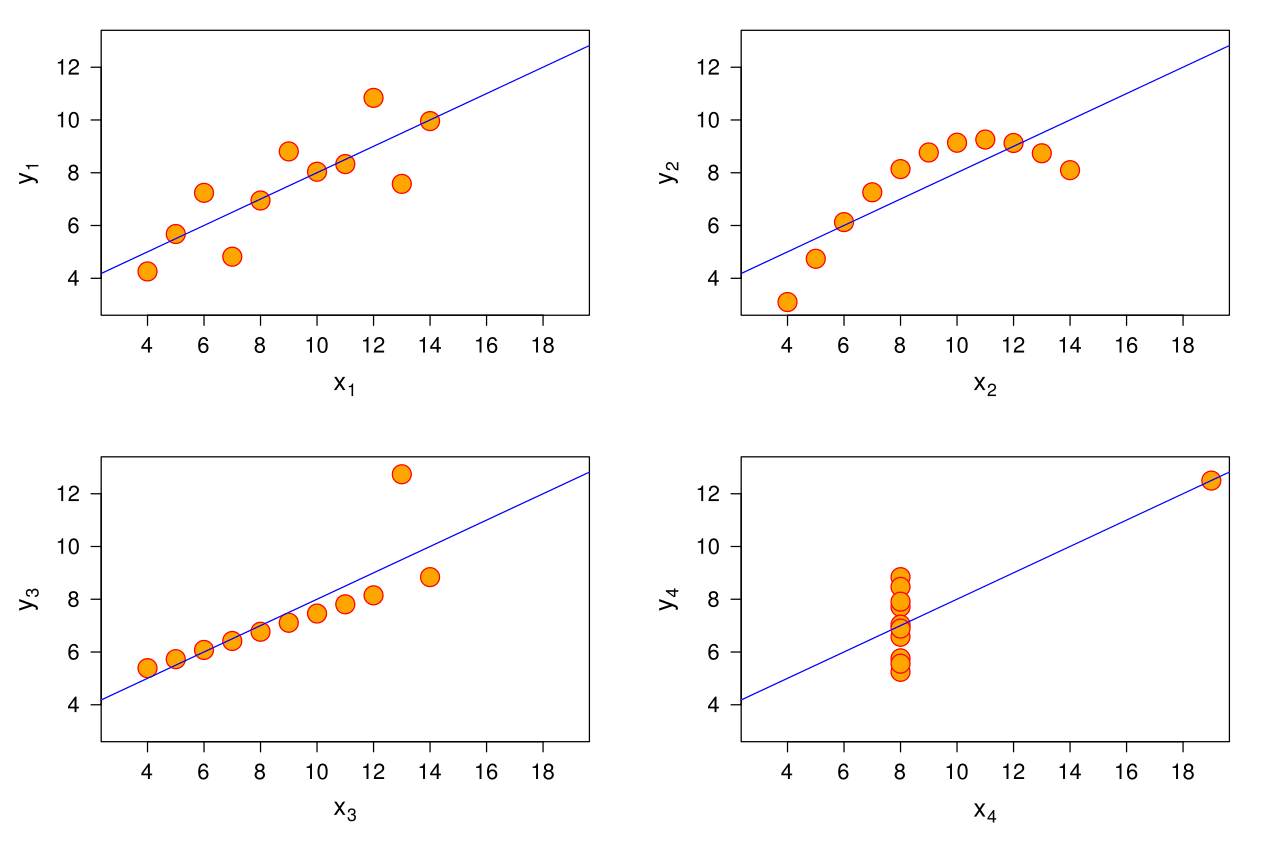This is a very basic question to ask, but I'm not sure I actually understand some fundamental properties people seem to ascribe to correlation.
As far as I understand it, correlation usually refers to Pearson's correlation coefficient, which is, according to Wikipedia, "a correlation coefficient that measures linear correlation between two sets of data." Cool.
But then I see a discussion on whether variables X and Y are related in some way, and reads like:
- well, X correlates to Y with r=0.8 so it's a good predictor/proxy/whatever
- X and Y have been found to correlate with r = 0.05, so its not a good predictor/proxy/whatever
For the first one, I'm OK. For the second one, not so much:
looking at Anscombe's Quartet:

It would seem that even though correlation (and therefore R²) are the same for all 4 datasets, the upper-rightmost one could be an Y completely dependent on X, probably a polynomial of some kind (in which case, Y could be perfectly explained by X), whereas in the down-rightmost one Y couldn't be explained as a function of X, of any kind.
Now, I understand that correlation only measures how linearly two variables are related, but again, in the same example, it would seem that we would be better served by considering other, non-linear ways they could be related.
Since correlation is such an extended way of measuring the relationships of X and Y, across many levels of competence and certainly among people I know understand this much better than I do, my questions are:
Why is, besides being the most nice/common/useful type of relation, linear relationship privileged in the way I described above? Why is it OK to say that X is not a good predictor of Y because r=0.05, which I'm understanding as "It has a bad linear relation", without adressing other ways they could be related, such as a grade 27 polynimial? Is the fact that they are "badly" linearly related enough to explain that they won't be related any other way?
Again, this a very basic lagoon I've just recently found on myself, so an explanation on any level would be very appreciated